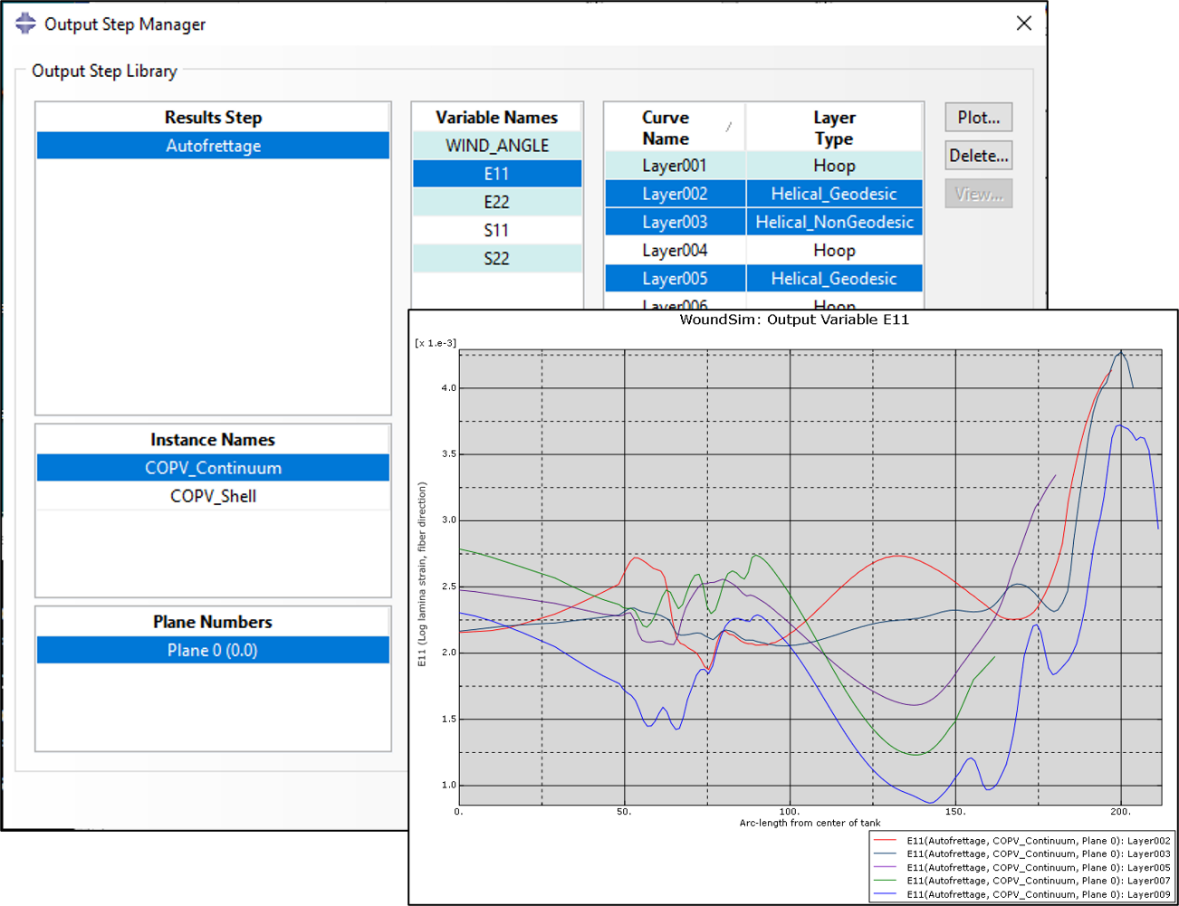
WoundSim 2024 Available


WoundSim 2024-1 is now available.
The latest version of WoundSim has been released, WoundSim-2024-1. This Abaqus/CAE plugin streamlines the process of creating 2D and 3D simulations of composite overwrapped pressure vessels (COPVs) directly within the Abaqus/CAE environment. Discover the enhanced features and expanded capabilities of COPV simulations with our latest update. For more details and to get in touch with our team, please visit our website at www.QustomApps.com, or contact sales@qustomapps.com.WoundSim GUI Improvements
- Model tree restructure (multiple models in xml, multiple COPVs in one model). This represents a very significant improvement in the usability of the WoundSim GUI

- 3 new failure measures, including 3D support for existing failure measures
- Rewrite of to-Boss option, we now compute the thickness buildup at boss instead of requiring user to specify by using Y-coord termination
- Additional layer termination, set-back, based on distance from end cap transition point of the previous layer for helical and end termination for hoop
- Most FEA info has been removed, only defined in WoundSim Abaqus since this was redundant
- Analytic results (Thick and thin analysis) built-in

- Path plots generated from WoundSim Abaqus plugin are stored on the .xml file and can be displayed from within the WoundSim GUI

WoundSim Abaqus Plugin:
- Model tree restructure (multiple models in xml, multiple COPVs in one model).
- Copy, rename, delete of models, COPV’s and instances from tree.
- Material and mandrels info is stored on xml tree, and can thus be easily edited, can also be written to and read from a standalone .xml library.
- 2 new failure measures (Hashin, Puck).
- Materials can include hyperelastic or any Abaqus material with elastic properties
- Micro-mechanics is stored on xml object (thus it is saved, can be modified, and rerun). Also, temperature-dependent fiber/matrix properties are supported.
- Layup can be created, edited, and plotted within WoundSim Abaqus plugin.

- Shells can be built with each layer represented as 4-ply using Abaqus material (not smeared properties). Thus, we can use hashin progressive failure built into Abaqus to model drop/impact.
- Brick models can contain layered bricks, thus allowing the user to control the number of bricks through the thickness of the layup. Layered bricks can be represented with layer-by-layer symmetric layups, and thus can take advantage of progressive failure to model drop and impact.

- Fully automated output path plotting using WoundSim output request. Resulting plots are stored on the .xml file

